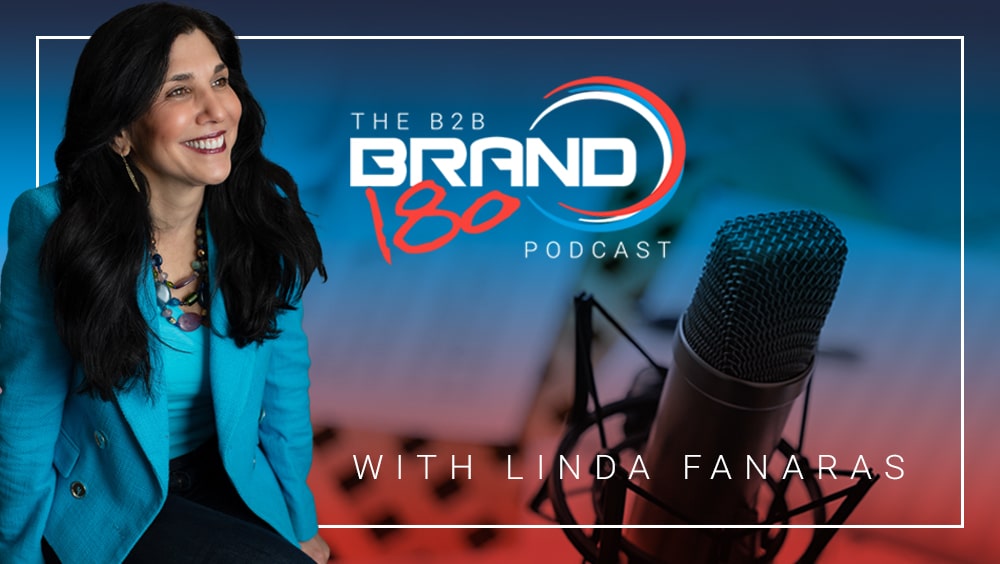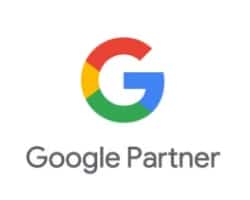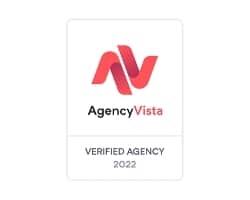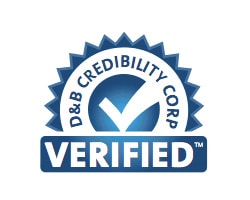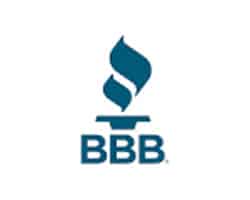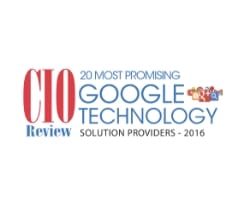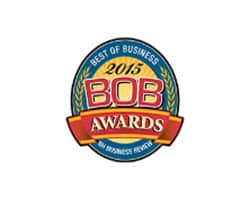In this episode of the B2B Brand180 podcast, Linda interviews Nick Loise from the Sales Performance Team. They discuss branding and marketing strategies that businesses can apply for a complete 180-degree shift in their marketing efforts. Nick discusses the importance of strong brand positioning and trust.
Key topics include mapping ideal customer profiles (ICP), crafting targeted messaging, and overcoming common industry challenges, B2B lead generation, optimal sales processes, and effective use of marketing channels.
01:10 The Importance of Branding in Sales
03:20 Understanding Ideal Customer Profiles (ICPs)
05:40 Crafting Effective Messaging for ICPs
12:17 Successful Campaigns and Lessons Learned
15:19 Effective Channels for B2B Marketing
17:29 Rapid Fire Questions and Final Advice
https://www.linkedin.com/in/nicholasloise/
https://salesperformanceteam.com
Linda’s LinkedIn: https://www.linkedin.com/in/lindafanaras/
Millennium Agency: Brand Strategy | Marketing | Web Design: https://mill.agency
YouTube Channel: https://www.youtube.com/@mill.agency/
Linda’s Books:
Claim Your White Space
https://www.amazon.com/CLAIM-YOUR-WHITE-SPACE-CRITICAL-ebook/dp/B0CLK8VLYV
Passion + Profits: Fueling Business And Brand Success
https://www.amazon.com/Passion-Profits-Fueling-Business-Success-ebook/dp/B0CLLDDSNX/
Linda Fanaras: 0:00
Welcome to the B2B Brand 180 podcast where we’ll discuss branding and marketing tools for business. My goal today is to provide you with transformative and innovative approaches that can help you make 180 degree shift in your marketing efforts or complete reversals in brand strategies. Hi, I’m Linda Fanaras. The owner of Millennium Agency, a branding and growth strategy firm, and the host of the B2B Brand 180 podcast. Today I’m excited to bring in Nick Louise from the Sales Performance Team. Nick is a seasoned sales and marketing expert with a rich background as a salesperson, entrepreneur, executive, and educator. He has a passion for and always has been enjoying helping entrepreneurs, businesses, and professionals. market and sell products better, faster, and more efficiently. He has revamped the sales process and marketing processes, created playbooks, and introduced new business development plans focused on putting the right strategies and people in place to drive revenue. So welcome, Nick. It’s great to have you here today. I’d love for you to take a couple minutes and introduce yourself, and I’ll tell the audience what we’ll cover today.
Nick Loise: 1:10
Yeah, Linda, first off, thank you so much for doing this. I don’t think in today’s day and age we talk about branding enough and creating a brand and a brand promise and how important it is, especially on my aspect where I’m on the sales side, right? Kind of the top, the bottom of the funnel, if you will. Or the deal side, the stronger the brand, the higher the trust. And I do think right now we’re in a vacuum of trust. So I always appreciate marketers when they talk about brand, and I know the. Pressure, create leads, create deal flow, all that MQLs, Marketing Qualified Leads and all that. The pressure is great, but really it starts with great brand positioning, great brand promising, positioning and differentiation in the marketplace and what you do and what you teach for your clients. Is so critical. So thank you for that. As a salesperson, the stronger the brand, the easier it is to sell. That’s true. And therefore, the easier my job is. And thank you for that. As you said, you were gracious in my introduction. I’ve been on the marketing side. I had a marketing firm for a number of years. I was a VP of Marketing for large healthcare organization. Branched off on my own. Then went into a marketing and sales education company, and then we were doing a lot of work on the sales side. But really my passion is, the marriage of sales and marketing. The marriage of branding and differentiation. Yes. And then closing the deal because of that. And, I talked to a lot of marketers all day long and it sometimes on certain generations positioning is lost and branding is lost. So everything you’re doing is great.
Linda Fanaras: 2:39
Great. That’s awesome. So I just want the audience to make sure they stay to listen in, because we will hear from Nick and you will learn how to map your ideal customer day so precisely that the message feels very personal. I’ve written to your prospect, you’ll learn how to craft messaging that actually mirrors the buyer’s internal dialogue and that can help. Drive immediate action. You’ll also learn why most lead gen fails and how to rebuild it around prevalence, not reach, and you’ll learn practical strategies to show up where your buyers are actually paying attention and convert. So now for our discussion with Nick. So Nick, let’s get started. What do you think the biggest mistakes companies are making when defining their ICP? And maybe just explain what an ICP is first, and then tell us how you think you could fix it.
Nick Loise: 3:30
Yeah. great question. So I think, ICP in the short form is ideal customer profile, right? Sometimes we call it an avatar id, it’s all the same. Who are we selling to? What’s the buyer persona that we’re selling to? Who are they, what keeps them up at night. And your question is very good, because I think we don’t go deep enough, right? So whenever I do any work with companies, and we are creating sales playbooks, we’re taking a lot of the work that the marketing team is doing, or if they have a marketing team, and really focusing on the ideal customer, right? And what is their buyer journey look like? What are all the different things that they go through if you’re selling on the B2B side, deals are taking longer. There’s more people around the table on buyer decisions. So what I think many companies don’t do is that they maybe have their primary ICP, but they don’t map out their secondary, tertiary decision maker ICPs. So you have to have, the financial buyer, ICP, you have to have the internal rabbi, if you will, or Sherpa ICP.
Nick Loise: 4:33
You need all these different buyer personas because more and more people are around the table and deals are taking longer. And we talked a little bit about in the intro, we do have a lack of trust in today’s marketplace. People are scared, right? They’re scared of making the wrong decisions. And so really having good conversations about the ICP who they are. What their motivations are. What’s their big motivation? What’s their minor motivation? What are their fears? What are the talking points that resonate with them? What’s the communication style and language that they like? And you really have to go deep on that. And I think that it helps break through the clutter. Yeah. If you will. And helps get your messaging in.
Linda Fanaras: 5:13
Yeah. And I think if you look at, if you are looking at individuals around the table, you might have a CEO. And you might have a VP of Marketing and you may even have a COO, and they’re all looking at it from their perspective. So to your point, making sure that you’re able to position. Whatever that messaging is, or your ICP or whatever the case may be, when you know the ideal customer profile that you’re talking to, you can actually build out that messaging. So that’s a great point. And I know a lot of times demographics, I think marketers will look at general demographics, but how do you go beyond demographics and get into the daily pressures of your buyers’ actual faces and really what their needs and wants are?
Nick Loise: 5:54
I think that isn’t done enough for a couple different reasons. One is we don’t have time, right? And so we want to go fast and furious, and I’m gonna use this story. I was at a dinner of all business owners, talking about marketing and sales, right? You know, wasn’t anything fun about what’s the latest Netflix show that we’re watching, or what are we streaming? It was all about marketing. And one gentleman owned a large agency and was in the consumer packaged goods, and he was saying, he was brought in by the Director of Marketing and but around the table was the CEO was the COO was the VP of Marketing, the VP of Sales. There was all these people around the table, and so you really have to kind of go deep on the language that they speak. Think about what KPIs, Key Performance Indicators they’re responsible for. And he said something really pivotal that I believe, right? So he said the director of marketing, her number one concern is that she doesn’t wanna get fired. She doesn’t wanna hire the wrong marketing firm, the wrong marketing agency. And use 12 months, six months, anything like that. If you think about maybe Bud Light is a story that comes to mind, right? I don’t wanna go into that, but that was just the wrong strategy and probably look good on paper, probably look good when they’re ideating it, but just in the execution of it. And what And the ramifications. It was the wrong strategy. So think about what that person’s number one driver is. Think about the CEO he owns, right? The entire P and L, but then there’s probably a product line manager that you’re dealing with that owns the minutia of that. Then there’s a VP of sales, probably a VP of marketing. They all own different KPIs. They all own different things, and they’re all thinking of it from their own sphere. exactly. Everybody thinks about, and especially if you’re dealing with corporate America, they’re dealing with it from their corporate sphere. So you gotta talk strategically, you gotta talk tactically, you gotta talk messaging and there’s so many vehicles for messaging in this day and age that my hat goes off to, marketers because how do you just evaluate all the different channels just on social alone, right? You know, from TikTok to Facebook to all these different things. So you really need to be focused. And when he distilled it, one his, the number one, the director of marketing fear was, I’m gonna get fired, right? I don’t wanna hire the wrong agency.’Cause she had stumbled on the first agency’cause she had hired a much larger agency and they were too slow. So now you have tactical, how fast can you get things done for me? How fast do you get things turned around for me? And it’s not just how do I gain market share? How do I increase sales? How do I increase awareness, but how do you help me do my job better? How do you take pain away from me? Yeah. How do you accelerate the way we’re gonna get things done internally? So you gotta think about it in a 360 of the person. And far too often we’re just thinking in tactics, right? Or end results. We’re gonna increase market share. Oh, it’s like motherhood and apple pie. Everybody wants to increase mother share, but you gotta really think about the person in their seat and what they’re dealing with, along with the 50,000 other things that they’re dealing with. A full inbox, family pressures, all that good stuff. So that’s how you have to do it. I know I laid a lot on the table. We can unpack a lot of that, but that’s really what you need to think about from a holistic standpoint of how do you really deal with ICPs and different levels of ICPs.
Linda Fanaras: 9:26
So what do you recommend for the audience when they’re looking at different ICPs, like the CEO versus A CMO versus a C? How should they determine what their biggest pain points are?
Nick Loise: 9:37
one is ask, right?
Linda Fanaras: 9:39
Ask. Ask.
Nick Loise: 9:40
Yeah. Yeah. I mean, walk me through, right? Yeah, you could. Yeah.
Linda Fanaras: 9:42
I mean, yeah. Yeah.
Nick Loise: 9:44
I realize that you probably have a strategic plan as an organization, right? You’re probably have quarterly results that either you have to bring to investors or the board. So what does that look like? What are the pain points? Where have you stumbled in the past? You don’t wanna be as trite as what’s keeping you up at night, because that, yeah. but you just, I think asking, but just. Understand the language of business, right? Yeah. And marketers sometimes don’t understand the language of business. And what I mean simply by that is the language of business historically sits on the accounting side, on the CFO side, right? So what is EBITDA, right? Earnings Before Interest Taxes and amortization. What is net profit, right? What’s your goals? Usually the goals are sitting on a dashboard, sitting on the P and L and sitting on the balance sheet, right? So how do we talk through those in different languages? Because everybody owns different KPIs, right? Everybody owns different P and Ls.
Linda Fanaras: 10:39
Yep. So what process do you use for crafting messaging that actually cuts through and gets to that ideal customer in a way that converts. So we talked about pain points, but when once you figure out, okay, this is the CMO, they don’t wanna get fired, they’re looking for lead generation, they’re trying to prove themselves. How do you come up with that messaging that cuts through and actually converts to leads?
Nick Loise: 11:04
Great question. If we have the benefit of data. We’re gonna pour through the data, And AI makes it faster, right? You could just ream through a lot of different, you know, data sets right now to look for key messaging. Key scripting. Micro scripts, if they have phone calls, if they have maybe inbound customer service calls or different types of calls, we’re gonna listen to those or we’re gonna comb through the transcripts of those to see what are people saying along the way. We’re gonna spend time on the socials, So if you’re a consumer facing brand. There’s a lot of chatter, right? Some of this, But there’s a lot of chatter that’s happening in the comment section. So we’re gonna go through all of that as much as we possibly can. We’re gonna do competitive analysis, right? What are your competitions saying? What are their messaging? Where’s their gap in the marketplace? And then we just kind, you know, ideate, right? And just saying, okay, here’s what it is. There’s six human desires or behaviors. We have fear, right? We wanna gain, we want different things in life. So you have to make sure your messaging hits on all of those six different human behaviors.
Linda Fanaras: 12:15
Right. Can you kind of walk us through maybe a campaign that just just nailed it, drove results, why you think it worked, how you went about it. Maybe a little bit more insight on that.
Nick Loise: 12:27
Yeah, so there’s a couple different campaigns and I think right now I’m gonna talk about one that we launched at our agency for a new product line that we were part taking to the marketplace, and we dealt with a lot of the home improvement, home services. So this is geared towards the home improvement, home services. And if you look at that in a total aggregate, that’s a very aggressive demographic. They know they need a lot of lead generation. They know they’re fighting, they’re tired of paying for leads, the same leads that everybody else gets, or you know that they’ve been called 52,000 times, but they know that they need to spend so they know what has to happen. And so we really focused on a very distinct demographic.
Nick Loise: 13:12
That demographic was new home movers. Okay. They all knew that they needed to get to new home movers. So this is a B2B sale going to B2C, business to consumer. Consumer being the new homeowner. And so we launched a couple different products that got them in front of the new movers, as fast and furious as possible.’cause they knew that the average new home buyer usually spent everything that they were gonna spend and invest in the house within the first seven months. So you need to be there on early stages. But you also needed to be there before. So we had to kind of get to pre-move And get their messaging in front of that. And then when they moved in, we needed to get in front of that. So we launched a couple different products. Digital as well as in-home advertising to get people to that, very successful in the marketplace because one is it spoke to a need right. Desirable demographic, how to get to a desirable demographic. Key messaging. I’m gonna get your message in front of them before everybody else. Yeah. Gain market share. Gain jobs, gain sales, and yeah. You know, marketing really, I had a mentor tell me this. It’s really nothing more than human behavior and math. So we gotta get you in front of enough people at the right time that they’re ready to make forward with the right messaging. So they say yes. And so that was one that was really successful for us. So we really, that’s great. You know, kind of always hold that up. Now listen for your audience. I’ve got five others that didn’t work right. And I keep memories of those, so I don’t make those same mistakes. I still have some phone numbers that we’re waiting for at least that first phone call for that campaign to happen. I always hate when people tell you, here’s all my wins in life and never have any losers. And I’ve had my fair share of marketing spends that didn’t get a good return on investment, and many times it was outta my own pocket. So that’s always as painful as your consumer pockets.
Linda Fanaras: 15:03
Yep. Even more painful. Yeah. But as a marketer, frankly, that’s what we do. We are constantly testing. We’re constantly piloting strategies, finding out what works, tweaking, what’s working, making it better, optimizing it. So it’s just part of. What we do as marketers. So I would are there any channels that you feel are working great right now? Now let’s see. If we could just stay on in front of the B2B audience. We’re talking businesses who would sell to other businesses.
Nick Loise: 15:31
Yeah. it’s messy. It’s messy in that space. So I’m gonna say something that everybody’s gonna moan and cry and roll their eyes. The phone is working the best, right? So the phone is working substantially better than other vehicles right now. Correctly done. LinkedIn messaging is outperforming. Cold email. Cold email is messy, right? It is just a battlefield right there. And they’re getting stronger about filtering through old school, but you’re gonna, you’re a marketer, so you’re gonna appreciate that direct mail. Now, direct mail is difficult because of the fact that where are people sitting nowadays? The only thing that are easy to get to them now are they may sit from home. Are they sitting in satellite offices? Where are they at? But direct mail, if you could get to that, works very well in conjunction with the phone. Now, here’s the deal. Everybody wants the one channel. There isn’t one channel, right? So I like a, like We call it Billet Crick, right? So how many different channels can I possibly use so that I am breaking through all the different clutter, right? Events are working really well, Really, well in the B2B space. I so if I’m doubling down, if I’m a CMO right? Or if I’m a VP of Sales, which we consult with all the time, here’s what I’m trying telling them to take a look at. You know, everybody wants the easy button. Everybody wants the magic bullet. There isn’t one. Sorry guys. I’m, you know, just giving you the truth. Focus on the phone. Focus on where are your events? How can you get to those events? Either you’re at them or you’re suit casing them. Talking to people and looking at direct mail in conjunction with direct mail, phone, email. But, not really junky direct mail. Do it Yeah. Impactful direct mail, figure out what you’re gonna be able to spend for a lead for a meeting and spend that in there. So in hierarchy, the ones that I would go to right now.
Linda Fanaras: 17:29
I’m gonna ask you two rapid fire questions if you can answer those and one or two. That would be great. And then we’ll bring it to a close. So how do you test and refine messaging to stay relevant as buyers’ behaviors continually shift?
Nick Loise: 17:44
You test fast and furious, right? So you gotta go through all the different channels. Social makes it easier. You could also test, it used to be test really an expensive on bing, right? So you can see kind of what messaging is going through. But socials is the easiest way to test messaging.
Linda Fanaras: 17:57
And then what advice would you give to CEOs who wanna scale lead gen without scaling noise?
Nick Loise: 18:03
Ah, good luck. yeah, there is noise. sorry. You said that I think what you said was very critical. A lot of people move past that really fast. You gotta really think of yourself as a venture capitalist in the marketing department. And so you’re gonna have some dogs, you’re gonna have some superstars, you’re gonna have some win, and you’re gonna have some, kind of people that are just, workhorses that are producing. And so you gotta spend, but you also gotta be able to pull the plug fast. So think of yourself as a venture capitalist. You’re gonna have some channels and some campaigns that fall, or just like you talked about, you gotta test, you gotta modify, but don’t get married to them. Pull the plug as fast as you can.
Linda Fanaras: 18:40
Perfect. All right, so Nick, you have a book called The Ultimate Guide to Managing Your Sales Team, and you have two companies, Sales Performance Team, and YourSalesRecruiter.com. I’d love for you to just speak quickly about your book.
Nick Loise: 18:54
Yeah. Yeah. So it’s a quick book, right? So you could read it on the airplane is what I like to say, right? Okay. So it’s been enough to put in your briefcase and it’s a book that you could read on the airplane, when you’re flying. I gotta fly to Dallas today, so I would be able to finish it on the flight, and it’s really how to manage your sales department, how to create a process and a system, but also a platform to manage people. Because I think one of the hard, you know, everybody’s gonna say they have the hardest job in baseball, right? But the hardest job in business really is that sales leader’cause of the fact that he’s got pressure. He’s gotta manage a really diverse demographic of salespeople. We’re all a little twisted in our own way. And I say that with love and admiration. So really thinking about leadership, thinking about motivation, thinking about creating the right playbook and the right environment to have a sales team that moves through sometimes. And we deal with small to midsize businesses. They can’t really afford the A player. So you gotta create an environment that the B player can move to an A environment and performance, or that C player. Which maybe all you could afford can perform as a B player. Yeah. And so it’s really kind of setting that up and really hiring the right people and putting them on the right bus and moving that bus as fast and furious as possible.
Linda Fanaras: 20:04
That’s great. Alright. Awesome. Thanks Nick. Thanks for sharing all the valuable sales information and how it ties into marketing with our audience today. I’d love for you to tell everyone how they can get in touch with you.
Nick Loise: 20:13
I’m on the socials, right? So hit me up in LinkedIn, and Nicholas Loise, I think is the way it is. L-O-I-S-E. You could go to SalesPerformanceTeam.com, go to Sales Pack, S-A-L-E-S Pack, P-A-C-K,.SalesPerformanceTeam. And then we’ve got a bunch of goodies that we’ll give to all your listeners. We’re available. You could find us. And we love talking business and we totally love talking sales.
Linda Fanaras: 20:37
All right, thanks Nick. I appreciate you coming in again. And I just wanna take a moment and thank our audience for listening in today. And if you like what you heard, hit share or subscribe. Feel free to connect with me on Mill.Agency or LindaFanaras.com or just reach out via LinkedIn. Thank you.





